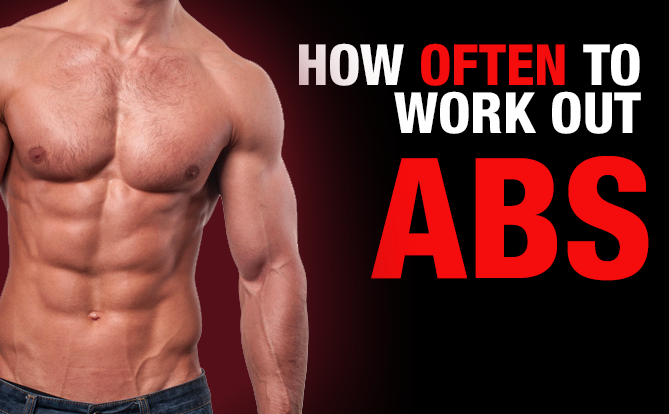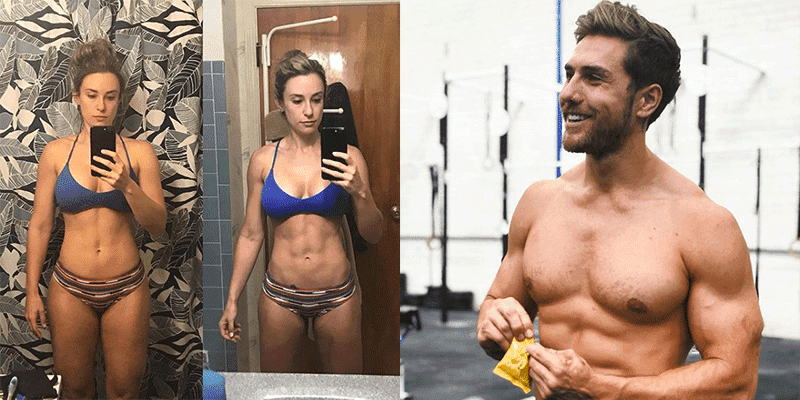Are you wondering how often you should exercise your abs to see real results? You’re not alone.
Many people hit the gym, do endless crunches, and still don’t get the toned stomach they want. The truth is, working your abs the right way and at the right frequency can make all the difference. You’ll discover how often you should train your abs to build strength, avoid injury, and get that defined core you’re aiming for.
Keep reading—you’re closer to your goal than you think.

Credit: learn.athleanx.com
Benefits Of Regular Ab Workouts
Regular ab workouts bring many health benefits. They strengthen your core, improve posture, and help prevent injuries. Strong abs support daily movements and exercise. Even short, consistent sessions can make a big difference over time.
Improved Core Strength
Strong abs build a solid core. This helps with lifting, twisting, and bending. Core strength supports your spine and reduces back pain. It also improves overall body strength. A strong core makes many activities easier and safer.
Enhanced Posture And Balance
Regular ab exercise helps your posture. Strong abs keep your spine aligned. Good posture reduces strain on muscles and joints. It also helps you stand and sit correctly. Better balance comes with a strong core too. This lowers the risk of falls and improves movement control.
Injury Prevention
Strong abs protect your body from injuries. They stabilize your spine during physical activity. This reduces the chance of muscle strains and joint problems. A strong core absorbs shocks and supports your movements. Injury risk drops when your abs are well trained.

Credit: www.boxrox.com
Factors Influencing Workout Frequency
Knowing how often to exercise your abs depends on several key factors. These factors help you plan workouts that match your body’s needs. Paying attention to them improves results and prevents injuries. Understanding these points helps you create a balanced workout schedule. Let’s explore what affects your ab workout frequency.
Fitness Level And Goals
Your fitness level shapes how often you should work your abs. Beginners need more rest between sessions. Their muscles take longer to recover. People with stronger core muscles can train abs more often. Goals also matter. Building strength needs fewer sessions but higher intensity. For toning, more frequent but lighter workouts work better.
Recovery Time
Abs need time to repair after exercise. Muscles grow during rest, not workout. Skipping recovery can cause soreness and injuries. Recovery time varies by workout intensity. Hard sessions need longer rest. Light exercises may allow daily training. Listen to your body to avoid overtraining.
Overall Workout Routine
Your full workout plan affects ab training frequency. If you train abs on their own, you can do it more often. Abs worked indirectly during other exercises need less direct training. Balance ab workouts with cardio and strength training. This keeps your routine effective and safe. Mixing workouts helps your body stay strong and healthy.
Optimal Abs Training Frequency
Finding the right abs training frequency is important. Abs are muscles like any other. They need time to rest and grow stronger. Training abs too often can cause fatigue and slow progress. Training too little will not give good results. The goal is to train abs enough to build strength and definition.
Training Beginners
Beginners should start slow. Aim for 2 to 3 times per week. Each session can last 10 to 15 minutes. Focus on simple exercises like crunches and planks. Rest days are key to let muscles recover. Consistency beats intensity at this stage.
Intermediate Strategies
Intermediate exercisers can train abs 3 to 4 times weekly. Add variety with leg raises, bicycle crunches, and Russian twists. Sessions can be 15 to 20 minutes long. Increase intensity by adding more sets or reps. Keep rest periods short but allow recovery between workouts.
Advanced Approaches
Advanced trainees may train abs 4 to 5 times a week. Use complex moves like hanging leg raises and cable crunches. Mix strength and endurance training for best results. Sessions can last 20 to 30 minutes. Pay attention to muscle fatigue to avoid overtraining.
Types Of Ab Exercises
Understanding the types of ab exercises helps you train better. Not all ab workouts are the same. Each type targets your core muscles differently. Mixing these exercises can improve strength and shape.
Isolated Movements
Isolated movements focus only on the abdominal muscles. Crunches and leg raises are common examples. These moves target your abs directly. They help build muscle in a specific area.
Isolated exercises are good for beginners. They teach you to feel and control your abs. Perform them with good form to avoid injury.
Compound Exercises
Compound exercises work multiple muscle groups at once. Planks and mountain climbers involve abs and other muscles. These moves burn more calories and build strength.
Compound exercises improve overall fitness. They help your body work as a team. Adding these to your routine boosts core stability and balance.
Functional Core Training
Functional core training mimics real-life movements. It prepares your body for daily activities and sports. Exercises like medicine ball throws and cable rotations fit here.
This training improves coordination and power. It makes your core strong and flexible. Functional moves reduce injury risk during normal tasks.
Signs Of Overtraining Abs
Overtraining your abs can cause harm instead of good. Your body needs time to rest and heal after workouts. Ignoring warning signs can lead to long-term problems. Watch for signals that your abs need a break. Early action helps avoid serious issues.
Muscle Fatigue And Soreness
Feeling very tired or sore in your abs is a clear sign. Mild soreness is normal after exercise. But constant, sharp pain means overuse. Muscles need rest to repair. Pushing through pain can make soreness worse. Take a day off to let muscles recover.
Decreased Performance
Abs that feel weak or tired during workouts show trouble. You may do fewer reps or lose form. Performance drops when muscles are overtrained. Lack of strength means you must slow down. Rest days help your abs regain power.
Increased Risk Of Injury
Overworked abs are more likely to get hurt. Strains and pulls happen without enough recovery. Injuries can stop your fitness progress. Proper rest lowers injury chances. Listen to your body to stay safe.

Credit: www.burnthefatinnercircle.com
Combining Abs Workouts With Cardio And Diet
Combining abs workouts with cardio and a healthy diet creates the best path to visible abs. Abs exercises build muscle, but they don’t burn much fat alone. Cardio helps burn calories and reduce overall body fat. A good diet supports fat loss and muscle growth. Together, they improve your chances of seeing defined abs.
Fat Loss For Visible Abs
Visible abs depend on low body fat. Abs muscles can be strong but hidden under fat. Losing fat requires burning more calories than you eat. Focus on a calorie deficit through diet and exercise. Fat loss happens all over your body, not just your belly.
Cardio Frequency And Intensity
Cardio helps burn extra calories and fat. Aim for 3 to 5 cardio sessions per week. Mix moderate and high-intensity workouts. Moderate cardio can be walking or cycling for 30 to 60 minutes. High-intensity intervals burn more calories in less time. Choose activities you enjoy to stay consistent.
Nutritional Tips
Eat balanced meals with protein, healthy fats, and fiber. Protein helps build and repair muscles. Fiber keeps you full and supports digestion. Limit sugary and processed foods. Drink plenty of water to stay hydrated. Control portion sizes to avoid overeating. Healthy eating fuels your workouts and aids fat loss.
Sample Weekly Ab Workout Plans
Creating a weekly ab workout plan helps build strong, defined muscles. A good plan balances effort and rest. It fits your fitness level and goals. Below are sample plans for different schedules.
These plans show how often to train abs for best results. They include exercises to target all core muscles. Follow the plan that suits your time and energy.
3-day Routine
Train your abs three times a week on non-consecutive days. Each session lasts about 15 to 20 minutes. Focus on basic moves like crunches, leg raises, and planks. Do 3 sets of 12 to 15 reps per exercise. This plan allows muscles to recover and grow stronger.
5-day Split
Work abs five days a week with lighter exercises each day. Mix different movements to target upper, lower, and side abs. Keep sets low, around 2 to 3, with 10 to 12 reps. Use this plan if you want more frequent, shorter sessions. It helps keep your core active throughout the week.
Incorporating Rest Days
Rest days are key to muscle repair and avoiding injury. Schedule at least one or two rest days every week. On rest days, avoid heavy core work. Gentle stretching or light cardio can help recovery. Listen to your body and take extra rest if needed.
Frequently Asked Questions
How Often Should You Exercise Abs Weekly?
You should exercise abs 3 to 4 times per week. This frequency allows muscle recovery and effective strengthening. Overtraining can lead to fatigue and injury. Consistency and rest are key for visible results and core stability.
Can Daily Ab Workouts Be Harmful?
Daily ab workouts can cause muscle strain and fatigue. Abs need rest like other muscles to recover and grow stronger. Overtraining may hinder progress and increase injury risk. Aim for balanced workouts with rest days for optimal results.
How Long Should Each Ab Workout Last?
Each ab workout should last about 10 to 15 minutes. Focus on quality over quantity with controlled, effective exercises. Short, intense sessions prevent burnout and maintain motivation. This duration fits well into most fitness routines.
Should Abs Be Trained Separately Or With Full-body Workouts?
Abs can be trained both separately and within full-body workouts. Combining both methods promotes balanced strength and muscle definition. Full-body workouts engage the core naturally, while focused ab sessions target specific muscles for improvement.
Conclusion
Exercising your abs regularly helps build strength and improve posture. Aim for two to three sessions each week for best results. Give your muscles time to rest and grow between workouts. Focus on quality, not just quantity, during each session.
Remember, consistency matters more than intensity alone. Balance ab workouts with full-body exercises for better fitness. Stay patient; visible results take time and effort. Keep your routine simple and steady to stay motivated. Your abs will thank you for regular care and attention.
